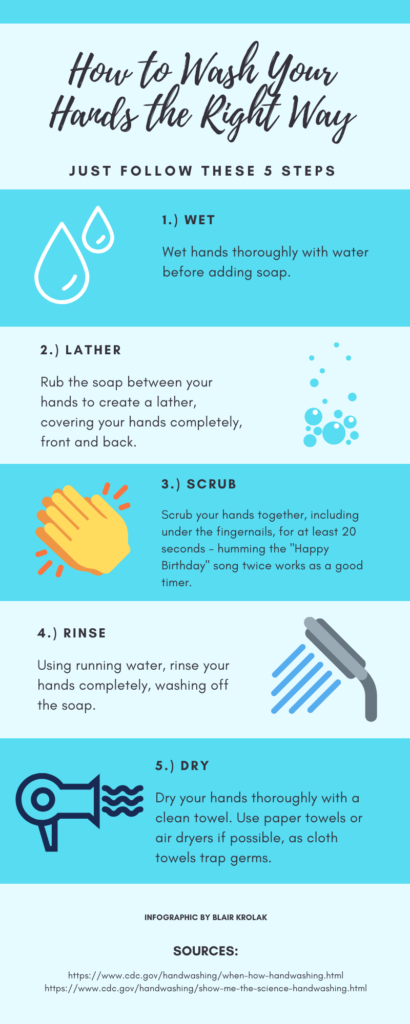For a significant portion of the United States, December marks the beginning of the coldest months of the year. As we all know, when the cold weather rolls in, so do the sniffles. The first week of December is dedicated to one of the best and simplest ways to avoid getting sick — washing your hands!
Why is Handwashing so Important?
It’s a scary but true fact that approximately 80% of all communicable illnesses can be passed along by touch. Humans involve their hands in so many tasks, it’s impossible to keep track of everything we handle. However, the germs and bacteria picked up through the day stand little chance against a good handwashing. Remembering to always wash your hands before eating and after particular tasks will cut the risk of transmission considerably. According to the National Day Calendar, “studies show that people who wash their hands have 24% less sick days because of respiratory illness, and 51% fewer sick days due to a sick stomach.”

When to Wash Your Hands
While it is always very important to wash your hands before preparing food and eating, there are also other times where handwashing is crucial. The Centers for Disease Control and Prevention suggests washing your hands after these tasks:
- Using the bathroom
- Caring for a sick family member
- Touching animals, pet food, or animal waste
- Taking out the garbage
- Dressing a cut or wound
- Blowing your nose, coughing or sneezing
Handwashing the Right Way
As simple as it may seem, there is a right way (and a wrong way!) to wash your hands. Many of the benefits of handwashing can be negated or undone by not following the proper steps. The CDC outlines the procedure you should follow to get the most benefit out of handwashing.
Many people do not take enough time while handwashing. It is recommended that you spend at least 20 seconds scrubbing your hands thoroughly. Adopting little tricks can help, such as humming “Happy Birthday” twice through as a rough timer. When you’re done, don’t undo all of your hard work by using a dirty towel to dry your hands. Drying is a very important process as more germs are communicated through wet hands than dry ones. Even a seemingly clean towel can trap bathroom germs after a single use. Therefore, consider using disposable paper towels or a hot air dryer.
Using Hand Sanitizer
When access to soap and running water is limited, hand sanitizer is a very good alternative. According to the CDC, sanitizers that contain at least 60% alcohol are much more effective than poor handwashing. This is, in part, because it takes about the recommended 20 seconds for the liquid to dry through vigorous rubbing. Hand sanitizer has been shown to be very effective in the prevention of viruses such as influenza and the common cold.
However, it is important to note that even at a high alcohol percentage, hand sanitizer does not remove all types of germs. This is especially true for very dirty or greasy hands. In addition, many of the germs on our hands collect under the fingernails, which will require scrubbing to clean completely. In the case of norovirus, hand sanitizer can be used in conjunction with soap and water, but never as a replacement.
A little extra time spent can mean less sick days all season long. So keep those hands clean and stay healthy this winter!
Disclaimer: The materials contained on this website are provided for informational purposes only and do not constitute legal or other professional advice on any subject matter. Advanced Medical Practice Management does not accept any responsibility for any loss which may arise from reliance on information contained on this site.




